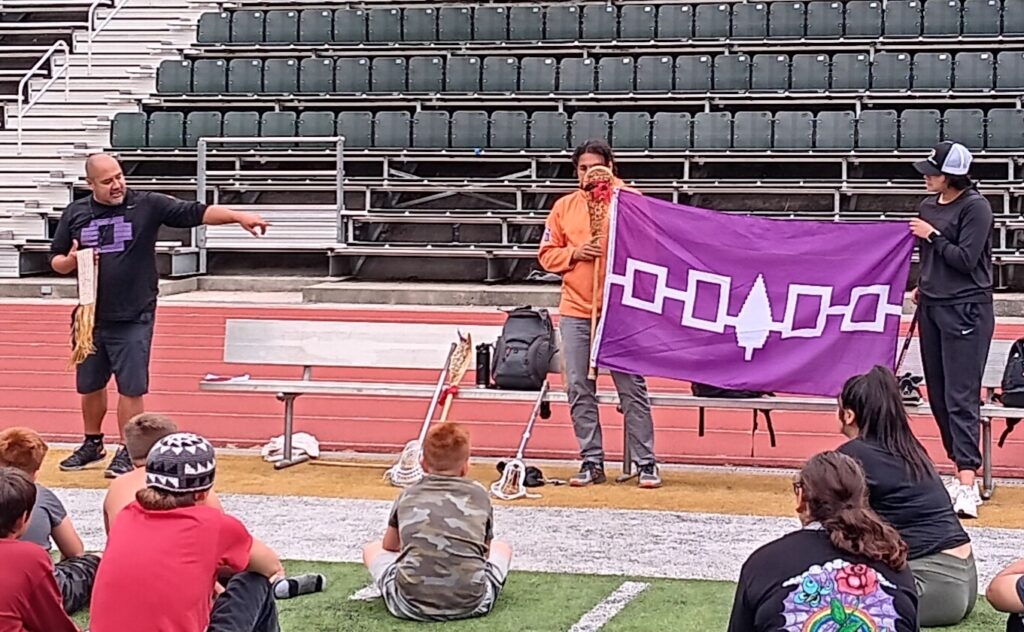
Native American teens in Humboldt County had the opportunity to learn about their traditional stick games this summer, including getting a lesson on the Creator’s Game from members of the Haudenosaunee National Lacrosse Team.
Thanks to the Da’luk Youth Program, about 50 campers took part in the Traditional Stick Games/Lacrosse Camp from July 10-13 at Cal Poly Humboldt, with additional support from Yurok Tribe Education, Tolowa Dee-ni’ Nation, Cal Poly Humboldt ITEPP, and Two Feathers-NAFS. Many of the campers stayed overnight in the Cal Poly Humboldt dorms to get the opportunity to see what life was like on a college campus.
Haudenosaunee Nationals Lacrosse member Ansley Jemison called the camp an “amazing” experience and was grateful to all the groups involved for holding the event. He also thanked Humboldt Lacrosse Hall of Famer Tony Silvaggio for helping organize the Haudenosaunee members’ participation. In 2011, then-head coach Silvaggio invited members of the Haudenosaunee out to Humboldt for a camp, and Jemison said he was grateful to return to the campus again.
“I really enjoyed connecting with the campers and seeing them using their creativity when playing the game,” Jemison said. “Tony Silvaggio was extremely helpful in making sure that we had sticks and goals. I cannot thank Tony enough for his help in getting us back out to put the camp on.”
Jemison and the other Haudenosaunee coaches taught the campers the basics of lacrosse — throwing, catching, and shooting — and explained a few simple rules, but didn’t want to make it too complicated for the first-time players.
“We really left it up to them to find a way to become a team and work towards finding the back of the net,” Jemison said. “We felt it was important that they just play.”
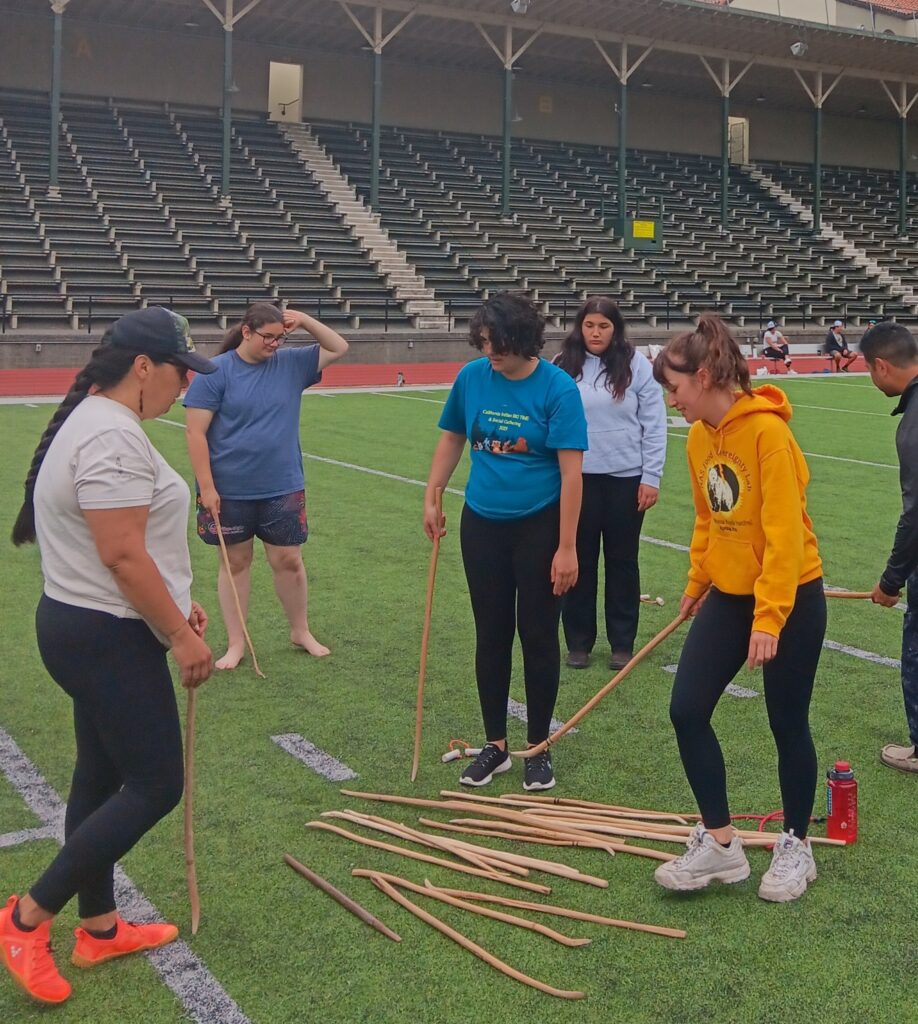
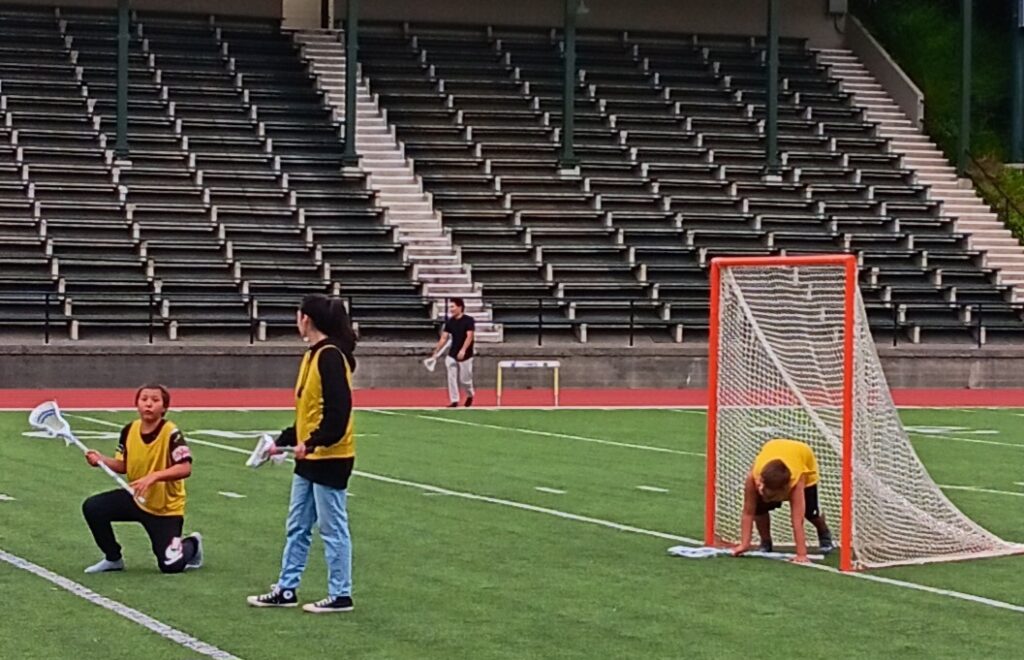
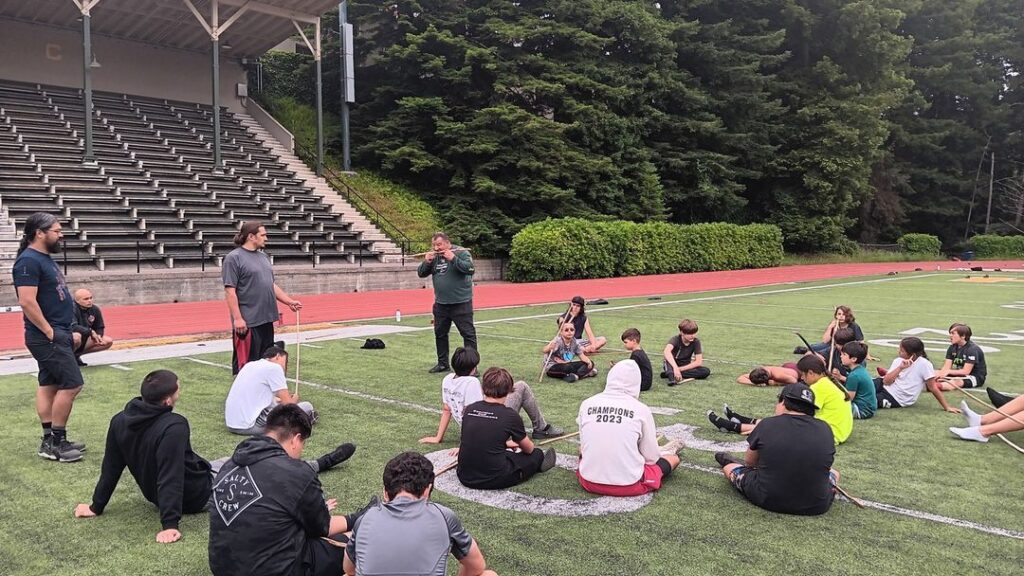
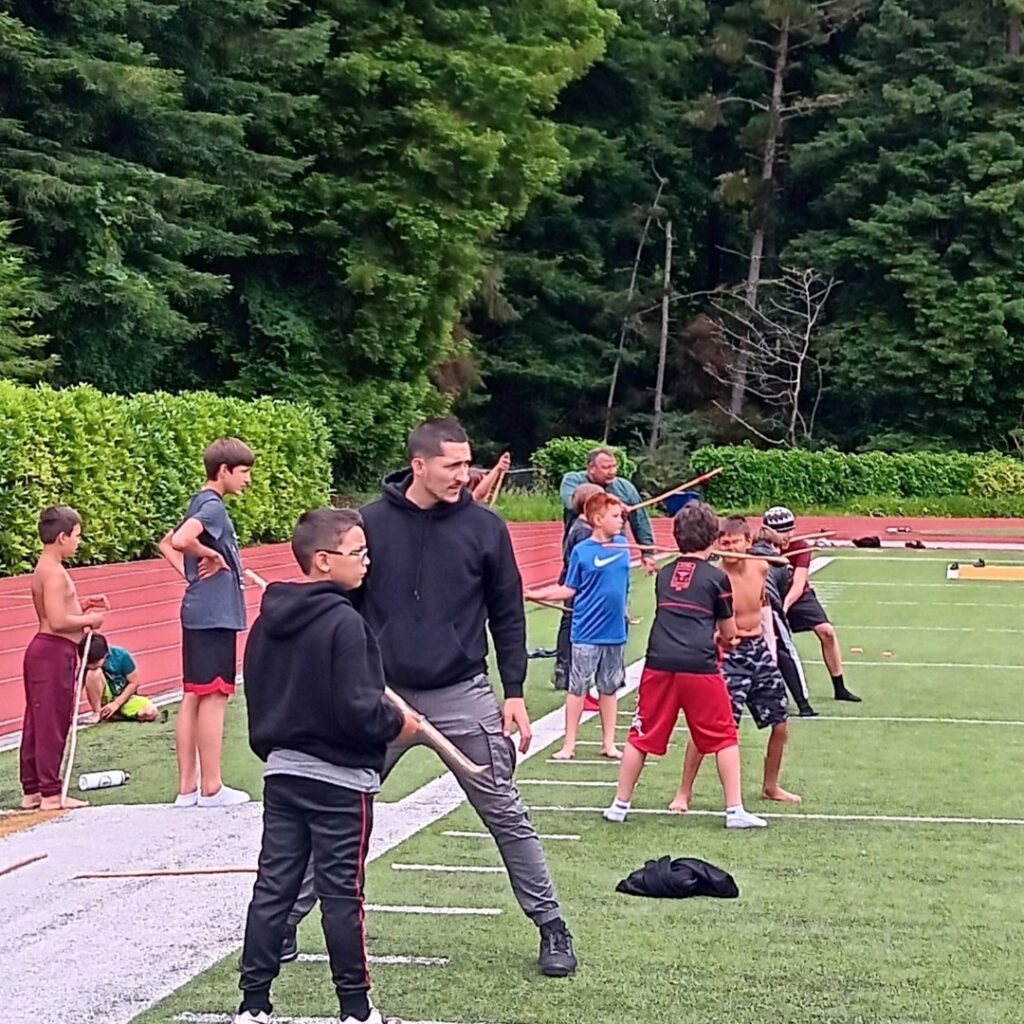
Afterward, the trio shared with the campers the history of lacrosse and “the importance that the game plays in our lives and in our culture.”
Lacrosse is a game anyone and everyone can play, Jemison said, and fill a role within the team.
“There’s a story in our culture about a game that was played in the skyworld between the birds and the animals,” Jemison said.
According to the Haudenosaunee, Jemison explained, as the birds and land animals picked teams for the first lacrosse game, a mouse and a squirrel asked if they could play with the forest animals. Deemed too small and weak to play on the same team as the bear, fox and wolf, the squirrel and mouse then asked the birds if they could be on their squad. After some deliberation, the birds fashioned some wings for the mouse, transforming him into a bat. The squirrel stretched its skin to make wings too, and while he couldn’t fly like the birds, he could glide and was extremely quick.
“This story is a teaching tool to remind us that everyone is important and everyone can contribute,” Jemison said.
During the game, the flying squirrel aggressively dove after the ball, picking it up on the ground and then quickly climbing up the trees to pass it back to his bird teammates. The bat, with its shifty flying style and dodging agility, was impossible to defend and ended up scoring the game’s winning goal.
“The game of lacrosse provides us with so many lessons and metaphors for life,” Jemison said. “It’s important for young people to connect to their indigenous roots, play traditional games and hear the stories that go along with them. It will help young people find themselves and a positive path in life.”
Special thanks to Ansley Jemison (Haudenosaunee Nation) & Tribal family from New York State, Guylish, Pyuwa and Tayshu Bommelyn, Zach Brown, Lonyx Landry, Rou Dalagurr and Food Sovereignty Lab Staff, Frank Lake, Yurok Tribe NECEP, Two Feathers-NAFS, Ernie Albers Jr., Sasheen Colegrove Raymond, Adrienne Colegrove Raymond, Tony Silvaggio and Paul Wells.